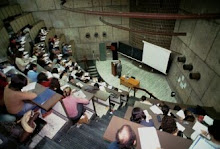
Instant Expert: The Human Brain
The brain is the most complex organ in the human body. It produces our every thought, action, memory, feeling and experience of the world. This jelly-like mass of tissue, weighing in at around 1.4 kilograms, contains a staggering one hundred billion nerve cells, or neurons.
The complexity of the connectivity between these cells is mind-boggling. Each neuron can make contact with thousands or even tens of thousands of others, via tiny structures called synapses. Our brains form a million new connections for every second of our lives. The pattern and strength of the connections is constantly changing and no two brains are alike.
It is in these changing connections that memories are stored, habits learned and personalities shaped, by reinforcing certain patterns of brain activity, and losing others.
Grey matter
While people often speak of their "grey matter", the brain also contains white matter. The grey matter is the cell bodies of the neurons, while the white matter is the branching network of thread-like tendrils - called dendrites and axons - that spread out from the cell bodies to connect to other neurons.
But the brain also has another, even more numerous type of cell, called glial cells. These outnumber neurons ten times over. Once thought to be support cells, they are now known to amplify neural signals and to be as important as neurons in mental calculations. There are many different types of neuron, only one of which is unique to humans and the other great apes, the so called spindle cells.
Brain structure is shaped partly by genes, but largely by experience. Only relatively recently it was discovered that new brain cells are being born throughout our lives - a process called neurogenesis. The brain has bursts of growth and then periods of consolidation, when excess connections are pruned. The most notable bursts are in the first two or three years of life, during puberty, and also a final burst in young adulthood.
How a brain ages also depends on genes and lifestyle too. Exercising the brain and giving it the right diet can be just as important as it is for the rest of the body.
Chemical messengers
The neurons in our brains communicate in a variety of ways. Signals pass between them by the release and capture of neurotransmitter and neuromodulator chemicals, such as glutamate, dopamine, acetylcholine, noradrenalin, serotonin and endorphins.
Some neurochemicals work in the synapse, passing specific messages from release sites to collection sites, called receptors. Others also spread their influence more widely, like a radio signal, making whole brain regions more or less sensitive.
These neurochemicals are so important that deficiencies in them are linked to certain diseases. For example, a loss of dopamine in the basal ganglia, which control movements, leads to Parkinson's disease. It can also increase susceptibility to addiction because it mediates our sensations of reward and pleasure.
Similarly, a deficiency in serotonin, used by regions involved in emotion, can be linked to depression or mood disorders, and the loss of acetylcholine in the cerebral cortex is characteristic of Alzheimer's disease.
Brain scanning
Within individual neurons, signals are formed by electrochemical pulses. Collectively, this electrical activity can be detected outside the scalp by an electroencephalogram (EEG).
These signals have wave-like patterns, which scientists classify from alpha (common while we are relaxing or sleeping), through to gamma (active thought). When this activity goes awry, it is called a seizure. Some researchers think that synchronising the activity in different brain regions is important in perception.
Other ways of imaging brain activity are indirect. Functional magnetic resonance imaging (fMRI) or positron emission tomography (PET) monitor blood flow. MRI scans, computed tomography (CT) scans and diffusion tensor images (DTI) use the magnetic signatures of different tissues, X-ray absorption, or the movement of water molecules in those tissues, to image the brain.
These scanning techniques have revealed which parts of the brain are associated with which functions. Examples include activity related to sensations, movement, libido, choices, regrets, motivations and even racism. However, some experts argue that we put too much trust in these results and that they raise privacy issues.
Before scanning techniques were common, researchers relied on patients with brain damage caused by strokes, head injuries or illnesses, to determine which brain areas are required for certain functions. This approach exposed the regions connected to emotions, dreams, memory, language and perception and to even more enigmatic events, such as religious or "paranormal" experiences.
One famous example was the case of Phineas Gage, a 19th century railroad worker who lost part of the front of his brain when a 1-metre-long iron pole was blasted through his head during an explosion. He recovered physically, but was left with permanent changes to his personality, showing for the first time that specific brain regions are linked to different processes.
Structure in mind
The most obvious anatomical feature of our brains is the undulating surfac of the cerebrum - the deep clefts are known as sulci and its folds are gyri. The cerebrum is the largest part of our brain and is largely made up of the two cerebral hemispheres. It is the most evolutionarily recent brain structure, dealing with more complex cognitive brain activities.
By: Helen Philips





No hay comentarios:
Publicar un comentario